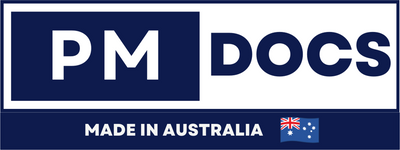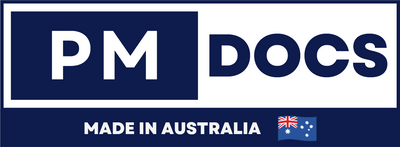Top Non-Conformities Identified During Internal Audits In Australia
Introduction
Internal audits are designed to evaluate the effectiveness of an organization's risk management, control, and governance processes. However, conducting these audits can be challenging due to various factors, including complex regulatory environments, evolving business landscapes, and resource constraints. Organizations must navigate these hurdles to ensure that their internal audits are both effective and efficient.

The Role Of Internal Audits
Internal audits are essential for identifying discrepancies in business operations. They provide an independent assessment of the organization's internal controls, risk management, and governance processes. By identifying areas for improvement, internal audits help organizations enhance their overall performance and ensure compliance with applicable laws and regulations. These audits also foster transparency and accountability, which are critical for maintaining stakeholder trust. Moreover, internal audits can serve as a proactive measure to anticipate and address potential risks before they escalate into significant issues.
Navigating Complex Regulatory Environments
The regulatory landscape is continually evolving, presenting a significant challenge for organizations aiming to remain compliant. Internal auditors must stay updated with changes in laws and regulations to ensure compliance. This requires ongoing education and professional development to understand new legal requirements and how they impact the organization. Additionally, auditors must develop strategies to integrate these regulations into existing processes without disrupting operations.
Overcoming Resource Constraints
Resource constraints, such as limited budget, time, and personnel, can significantly impact the effectiveness of internal audits. Organizations must prioritize their audit activities to focus on high-risk areas, ensuring efficient allocation of limited resources. Leveraging technology, such as audit management software, can also streamline processes and improve productivity. Moreover, organizations may consider outsourcing certain audit functions to external experts to mitigate resource limitations and gain specialized insights.
Adapting To Evolving Business Environments
Rapid changes in technology and market dynamics require auditors to constantly update their knowledge and skills. This includes understanding emerging technologies and their impact on business operations, as well as staying informed about industry trends. Organizations can support their audit teams by providing access to training and resources that enhance their ability to adapt to these changes. By fostering a culture of continuous learning, organizations can ensure their audit processes remain relevant and effective.
Common Non-Conformities In Australian Internal Audits
Non-conformities refer to instances where an organization fails to meet specific requirements or standards. In the context of internal audits, non-conformities highlight areas where improvements are needed. Here are some common non-conformities identified in Australian internal audits:
1. Inadequate Documentation
Proper documentation is vital for effective internal audits. Inadequate or incomplete documentation can lead to misunderstandings and misinterpretations, ultimately affecting the audit's outcome. Common issues include:
-
Missing Records: Essential documents, such as financial statements, contracts, and policies, may be missing or incomplete. This can result in an inability to verify compliance with regulations or assess the effectiveness of internal controls. Organizations must establish clear protocols for document retention and ensure that all critical information is readily accessible during audits.
-
Inconsistent Documentation: Discrepancies between documented procedures and actual practices can lead to confusion and errors. This inconsistency can undermine the credibility of audit findings and hinder the implementation of corrective actions. To address this, organizations should conduct regular reviews of their documentation practices and align them with operational realities.
-
Lack of Standardization: Without standardized documentation procedures, organizations may face challenges in maintaining consistency and accuracy across different departments. Establishing standardized templates and guidelines for documentation can help ensure uniformity and facilitate easier audits.
2. Insufficient Risk Assessment
Risk assessment is a critical component of internal audits. It involves identifying potential risks and evaluating their impact on the organization. However, many organizations struggle with:
-
Lack of Comprehensive Risk Analysis: Failing to conduct a thorough risk assessment can result in overlooked vulnerabilities. Organizations must adopt a holistic approach to risk analysis, considering both internal and external factors that could impact their operations. This includes assessing financial, operational, and strategic risks.
-
Inadequate Risk Mitigation Strategies: Without proper risk management plans, organizations are ill-prepared to address identified risks. Developing robust risk mitigation strategies requires collaboration across different departments to ensure comprehensive coverage. Organizations should also establish regular monitoring and review mechanisms to assess the effectiveness of these strategies.
-
Over-reliance on Historical Data: While historical data is valuable, relying solely on past trends can lead to a narrow understanding of potential risks. Organizations should incorporate forward-looking analysis and scenario planning to anticipate and prepare for emerging risks.
3. Non-Compliance with Regulations
Compliance with industry regulations and standards is essential for maintaining credibility and avoiding legal repercussions. Common non-conformities in this area include:
-
Failure to Meet Regulatory Requirements: Organizations may fail to adhere to specific laws, standards, or guidelines, leading to potential penalties. Regular compliance audits and updates can help organizations stay aligned with evolving regulations. Additionally, fostering a culture of compliance and accountability can ensure that all employees understand and adhere to regulatory requirements.
-
Outdated Compliance Practices: As regulations evolve, organizations must update their practices to remain compliant. This requires a proactive approach to monitoring regulatory changes and implementing necessary adjustments. Regular training and education for employees can also help ensure compliance practices remain current and effective.
-
Inadequate Compliance Monitoring: Without effective monitoring systems, organizations may struggle to detect and address compliance breaches promptly. Implementing automated compliance monitoring tools can enhance oversight and provide real-time insights into compliance status.
4. Ineffective Internal Controls
Internal controls are processes and procedures designed to safeguard assets, ensure financial accuracy, and promote operational efficiency. Common issues include:
-
Weak Control Measures: Insufficient internal controls can lead to fraud, errors, and inefficiencies. Organizations should conduct regular assessments of their control measures to identify and address weaknesses. This may involve implementing new technologies or processes to enhance control effectiveness.
-
Lack of Regular Review: Failing to regularly assess and update internal controls can result in outdated practices. Organizations should establish a schedule for periodic reviews of their controls, ensuring they remain relevant and effective in addressing current risks.
-
Inadequate Segregation of Duties: Without proper segregation of duties, organizations may face increased risk of fraud or errors. Establishing clear roles and responsibilities within processes can help mitigate these risks and enhance overall control effectiveness.
Addressing Non-Conformities And Mitigating Audit Risk Factors
To address common non-conformities and mitigate audit risk factors, organizations should consider the following strategies:
1. Strengthening Documentation Practices
Organizations can enhance their documentation practices by:
-
Implementing Standardized Procedures: Establishing clear guidelines for document creation, storage, and retrieval can improve consistency and accessibility. This includes using standardized templates and ensuring all employees understand their documentation responsibilities. Regular training sessions can reinforce these practices and address any challenges in documentation processes.
-
Regular Audits and Reviews: Conducting regular audits of documentation practices can help identify and address gaps. Organizations should schedule periodic reviews to ensure compliance with documentation standards and make necessary adjustments. These reviews can also serve as opportunities to identify and implement best practices across departments.
-
Leveraging Technology: Utilizing digital document management systems can enhance documentation efficiency and accuracy. These systems can provide centralized access to documents, improve version control, and facilitate easier audits.
5. Enhancing Risk Assessment and Management
Improving risk assessment and management involves:
-
Conducting Comprehensive Risk Analyses: Organizations should regularly evaluate potential risks and their impact on operations. This includes conducting risk workshops and engaging stakeholders across the organization to gather diverse perspectives. Scenario planning and stress testing can also provide valuable insights into potential vulnerabilities.
-
Developing Robust Risk Mitigation Plans: Implementing and regularly updating risk management strategies can help organizations respond effectively to identified risks. Organizations should establish clear protocols for risk response and ensure that all employees understand their roles in executing these plans. Regular simulations and drills can enhance preparedness and response effectiveness.
-
Integrating Risk Management into Decision-Making: Embedding risk management considerations into strategic planning and decision-making processes can enhance organizational resilience. This involves aligning risk management objectives with overall business goals and ensuring that risk considerations inform key decisions.
6. Ensuring Regulatory Compliance
To maintain compliance with regulations, organizations should:
-
Stay Informed of Regulatory Changes: Keeping abreast of changes in laws and standards can help organizations remain compliant. Organizations should establish processes for monitoring regulatory updates and disseminating relevant information to employees. Engaging with industry associations and regulatory bodies can also provide valuable insights and guidance.
-
Regular Training and Education: Providing ongoing training for employees can ensure they understand and adhere to regulatory requirements. Training programs should be tailored to different roles and responsibilities, ensuring that all employees are equipped with the knowledge and skills needed to maintain compliance. Additionally, organizations should conduct regular assessments to gauge training effectiveness and identify areas for improvement.
-
Establishing a Compliance Culture: Fostering a culture of compliance within the organization can enhance adherence to regulations. This involves promoting ethical behavior, encouraging open communication about compliance concerns, and recognizing employees who demonstrate exemplary compliance practices.
7. Strengthening Internal Controls
Enhancing internal controls involves:
-
Regular Review and Update of Controls: Organizations should periodically review and update their internal controls to ensure they remain effective. This includes assessing control effectiveness, identifying gaps, and implementing necessary improvements. Organizations should also consider engaging external experts for independent assessments of their control environment.
-
Implementing Preventative Measures: Establishing preventative measures, such as access controls and segregation of duties, can help reduce the risk of fraud and errors. Organizations should conduct regular reviews of access permissions and ensure that duties are appropriately segregated to minimize risk.
-
Utilizing Technology for Control Enhancement: Leveraging technology, such as automated control systems and data analytics, can enhance control effectiveness and provide real-time insights into control performance.
Conclusion
Internal audits are crucial for ensuring that organizations comply with regulations and operate efficiently. However, common non-conformities, such as inadequate documentation, insufficient risk assessment, non-compliance, and ineffective internal controls, can pose significant challenges. By understanding and addressing these non-conformities, organizations can enhance their processes, mitigate risks, and achieve their business objectives. Through robust documentation practices, comprehensive risk management, regulatory compliance, and strong internal controls, businesses can improve their internal audit outcomes and drive success.




